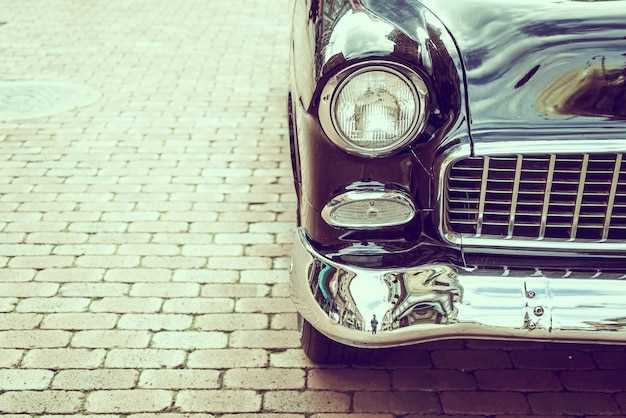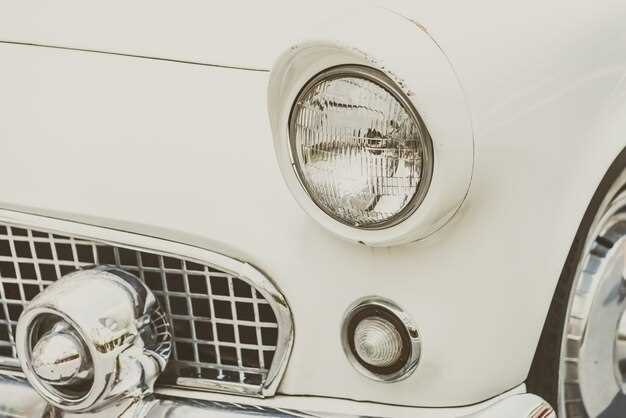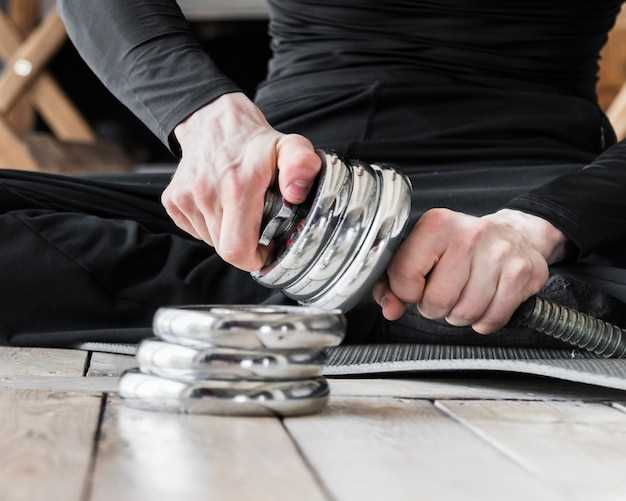Study the curves of a 1965 Ford Mustang. Notice the harmonious blend of form and function that has influenced contemporary designers. Classic cars exhibit a craftsmanship that modern automobiles strive to emulate, proving that nostalgia can fuel innovation.
Incorporating retro elements into today’s vehicles attracts consumers who seek both style and reliability. Automotive companies capitalize on this desire, infusing classic aesthetics into modern models. For instance, the revival of round headlights and chrome accents reflects a deliberate nod to the past, enhancing market appeal.
Materials used in classic cars also inspire modern designs. Steel frames and high-quality finishes from the past often result in longer-lasting and more robust vehicles today. By prioritizing durability and timeless elegance, manufacturers can create cars that resonate with both new buyers and vintage enthusiasts alike.
Adopting vintage-inspired features can elevate a vehicle’s desirability. Design teams frequently reference classic cars for ideas, ensuring that the allure of the past remains relevant. As high-tech advancements integrate with traditional aesthetics, the blend of old and new continues to shape the automotive industry.
Encourage designers to take bold steps in their creations. Embracing classic influences can lead to innovative breakthroughs that set new trends. By valuing the foundational designs of the past, the future of automobile design shines brighter and more appealing.
Design Elements Borrowed from Classic Models
Modern automobile design often incorporates elements from classic cars, enhancing both aesthetics and functionality. Curved lines, reminiscent of the 1950s, evoke nostalgia and elegance in today’s vehicles. For example, manufacturers frequently utilize rounded body shapes that mimic classic designs, creating a softer visual appeal.
Chrome detailing finds its way back into modern cars, bridging the gap between vintage aesthetics and contemporary flair. This shiny accent not only enhances visual interest but also draws attention to vehicle contours. Designers take cues from classic grilles, reinterpreting them with a modern twist while maintaining their distinctive character.
Interior design also showcases classic influences. Leather upholstery, inspired by vintage models, exudes luxury and comfort. Textured materials, such as houndstooth or plaid patterns popular in classic cars, reappear in modern interiors, providing warmth and uniqueness.
Even the dashboard layout takes inspiration from the past. Analog gauges, updated with digital technology, evoke the charm of classic instrumentation while offering modern functionality. This blend of old and new ensures familiarity without sacrificing innovation.
Tail light designs often reference classic shapes, with oval and round configurations frequently reimagined in today’s models. This choice enhances brand identity while creating a connection with automotive history.
By analyzing and adapting these classic design elements, automobile manufacturers successfully evoke emotion and connection, enriching the overall driving experience.
Technological Innovations Inspired by Vintage Automobiles
Retro designs inspire modern automotive technology, creating unique features and improving safety. A few notable innovations resonate with the timeless aesthetics of classic cars.
Consider the revival of analog gauges, which blend style with embedded technology. Manufacturers like Ford incorporate these gauges into their modern vehicles, offering a tactile experience while providing crucial information.
Another significant influence is the resurgence of particular car shapes, such as rounded edges and wide bodies, seen in vehicles like the Ford Mustang and Chevrolet Camaro. These designs borrow elements from classic muscle cars, promoting aerodynamics alongside nostalgic appeal.
- Hybrid Technology: Classic cars often used simple yet robust mechanics. Today, companies like Jaguar have introduced hybrid variants that reflect these principles, combining modern electric systems with traditional combustion engines.
- LED Lighting: Inspired by vintage designs, many manufacturers integrate LED lights into the bodywork of new cars. This enhances visibility while maintaining a vintage aesthetic.
- Modular Design: Inspired by the simplicity seen in older models, car makers explore modular design principles. This approach allows for easier customization and repairs.
Connectivity features in modern vehicles also draw inspiration from classic dashboard layouts. The incorporation of infotainment systems resembles the comprehensive information centers of vintage cars while enhancing user experience.
Safety features also see their roots in vintage engineering. For instance, classic cars emphasized robust construction, leading to modern techniques like crumple zones, which prioritize passenger safety without compromising on style.
Automakers continue to recognize the influence of vintage styles and technologies. As they integrate these elements, the automotive industry evolves while honoring its past.
Sustainability Practices: Lessons from the Past
Adopt durable materials reminiscent of classic car manufacturing. Many vintage vehicles utilized steel and aluminum, which enhanced longevity. Modern designs should incorporate these materials, reducing reliance on plastics and composites that degrade over time.
Implement streamlined designs that prioritize simplicity. Classic cars often featured minimalistic approaches with fewer components, leading to easier repairs and less waste. Modern automotive design can benefit from this strategy by focusing on modularity, allowing for easier upgrades and replacements.
Utilize remanufactured and recycled parts. Classic car enthusiasts regularly restore vintage vehicles with salvaged components, extending the life of these cars. Automakers today can follow suit by designing vehicles that allow for easy disassembly and reuse of parts, minimizing environmental impact.
Explore alternative fuels inspired by historical practices. Classic automobiles often relied on easily accessible fuel sources. Developing engines compatible with biofuels or other sustainable options can lessen dependency on fossil fuels while maintaining a nod to the past.
Encourage community involvement similar to vintage car shows. These events celebrate history and craftsmanship, building a strong sense of connection among enthusiasts. Modern companies can engage consumers by hosting eco-friendly events showcasing sustainable practices and car cultures.
Educate new generations on car maintenance. Many classic car owners possess skills for upkeep and repair. Creating programs that teach these skills promotes a culture of sustainability, encouraging longer vehicle life and reduced waste.
Drive advancements in electric vehicle design by learning from classic styling. The aesthetic appeal of vintage cars captivates many. Integrating timeless designs into electric models can attract a broader audience, reinforcing the connection between sustainability and style.
Focus on longevity in design philosophies. Classic cars were built to last, featuring robust engines and timeless styles. Modern automakers should prioritize quality over trends, ensuring vehicles remain usable and appealing for decades.
Emotional Connection: How Classic Cars Influence Buyer Preferences
Classic cars spark nostalgia, connecting buyers to memories and experiences from their past. These vehicles symbolize freedom, adventure, and a time when craftsmanship reigned supreme. Modern buyers often seek that emotional resonance, making classic design elements appealing in today’s market.
Manufacturers can create compelling marketing campaigns that highlight the emotional stories associated with classic models. Showcasing how these vehicles shaped lifestyle choices can resonate deeply with potential buyers. For instance, featuring customer testimonials or sharing vintage aesthetics in advertisements can evoke strong feelings tied to cherished moments in history.
Incorporating retro-inspired designs into new models attracts car enthusiasts who appreciate the classic aesthetic. Details like chrome accents, round headlights, and simple lines play on memories while blending modern technology with timeless beauty. When buyers see attributes reminiscent of beloved classic cars, they often feel more inclined to make a purchase.
Engagement through events, such as car shows or classic car restoration workshops, enhances brand loyalty. Offering experiences where enthusiasts can share their love for vintage vehicles helps strengthen the connection to modern brands that honor their legacy. This approach not only builds a community but also enhances the emotional appeal of new automotive offerings.
Understanding the emotional drivers behind car purchases shapes how brands approach design and marketing strategies. By tapping into nostalgia and the sentimentality associated with classic cars, manufacturers can effectively influence buyer preferences and create lasting connections with their vehicles.
Customization Trends Rooted in Classic Car Culture
Incorporate retro aesthetics into modern designs. Using vintage paint colors, chrome accents, and classic body lines can evoke the charm of classic cars while appealing to today’s buyers. Look for color palettes inspired by vehicles from the ’50s and ’60s, such as pastel shades and bold primary colors.
Embrace handcrafted elements. Custom upholstery featuring leather, tweed, or unique patterns adds a personalized touch that mass-produced interiors often lack. Consider sourcing local artisans who can provide bespoke interiors that reflect the owner’s personality and preferences.
Integrate modern technology discreetly. Classic car culture appreciates the ancient charm, so installing hidden tech can satisfy the desire for functionality without compromising vintage aesthetics. Think of advanced sound systems or GPS that blends seamlessly into the original design.
Encourage modular components. This approach allows owners to interchange parts, reminiscent of classic car enthusiasts who often swapped out components like grilles and wheels. Create styles that let drivers customize their vehicles easily, from body kits to performance enhancements.
Focus on sustainability through vintage-inspired eco-friendly materials. As classic cars often used heavy metals and plastics, modern interpretations can leverage sustainable woods, metals, and innovative composites. This trend meets the demand for environmentally conscious designs while maintaining a nod to the past.
Revisit performance upgrades with a retro flair. Classic cars were known for their powerful engines and unique performance characteristics. Today’s customizations can reflect this legacy through high-performance modifications that still respect the vehicle’s historic roots.
Implement unique finishes like patina and distressed looks. These finishes give new cars a distinctive, aged appearance that resonates with classic car enthusiasts. Consider using processes that achieve authentic aging effects on modern materials without compromising durability.
Encourage community involvement. Foster connections among car enthusiasts by hosting customization workshops or meet-ups. This can empower owners to share ideas, skills, and resources, enhancing their experience and deepening their ties to classic car culture.
The Role of Classic Cars in Shaping Automotive Branding
Classic cars significantly influence automotive branding by establishing a nostalgic connection with consumers. Manufacturers leverage this emotional appeal by integrating vintage design elements into modern vehicles, creating a strong brand identity that resonates with enthusiasts and collectors alike.
Consider this: brands like Ford and Chevrolet continuously draw inspiration from their historical models, utilizing recognizable shapes, colors, and logos that evoke a sense of heritage. This strategy strengthens customer loyalty and attracts new buyers who appreciate the blend of tradition and innovation.
| Brand | Classic Model | Modern Interpretation |
|---|---|---|
| Ford | 1965 Mustang | Mustang GT |
| Chevrolet | 1957 Bel Air | Camaro |
| Porsche | 911 (1964) | New 911 |
Modern brands effectively use classic car imagery in marketing campaigns, reinforcing their stories and values. By showcasing vintage models in advertisements or at events, companies create a narrative that emphasizes reliability and timelessness, appealing to a diverse demographic.
Integrating classic car design cues also allows brands to attract younger consumers who may not have direct experience with older models but appreciate their aesthetic and the heritage they represent. Collaborations with classic car restorers or museums can enhance brand visibility and authenticity.
In summary, the incorporation of classic cars into branding strategies enriches the consumer experience. Companies that successfully blend historical significance with contemporary design foster a strong market presence and build lasting relationships with their audience.






